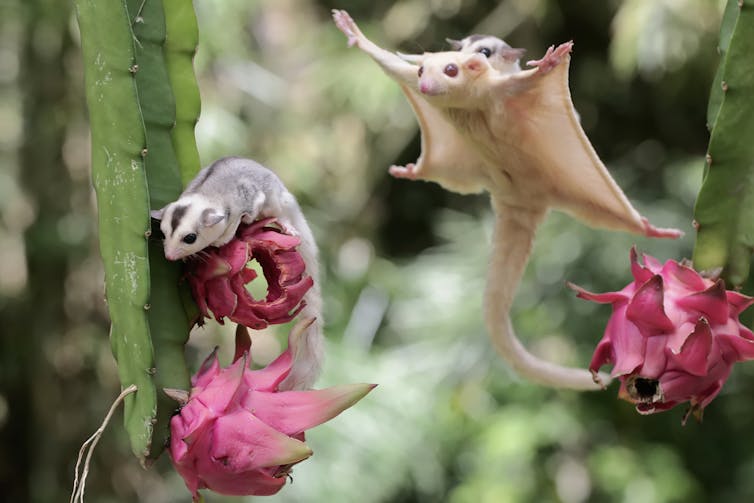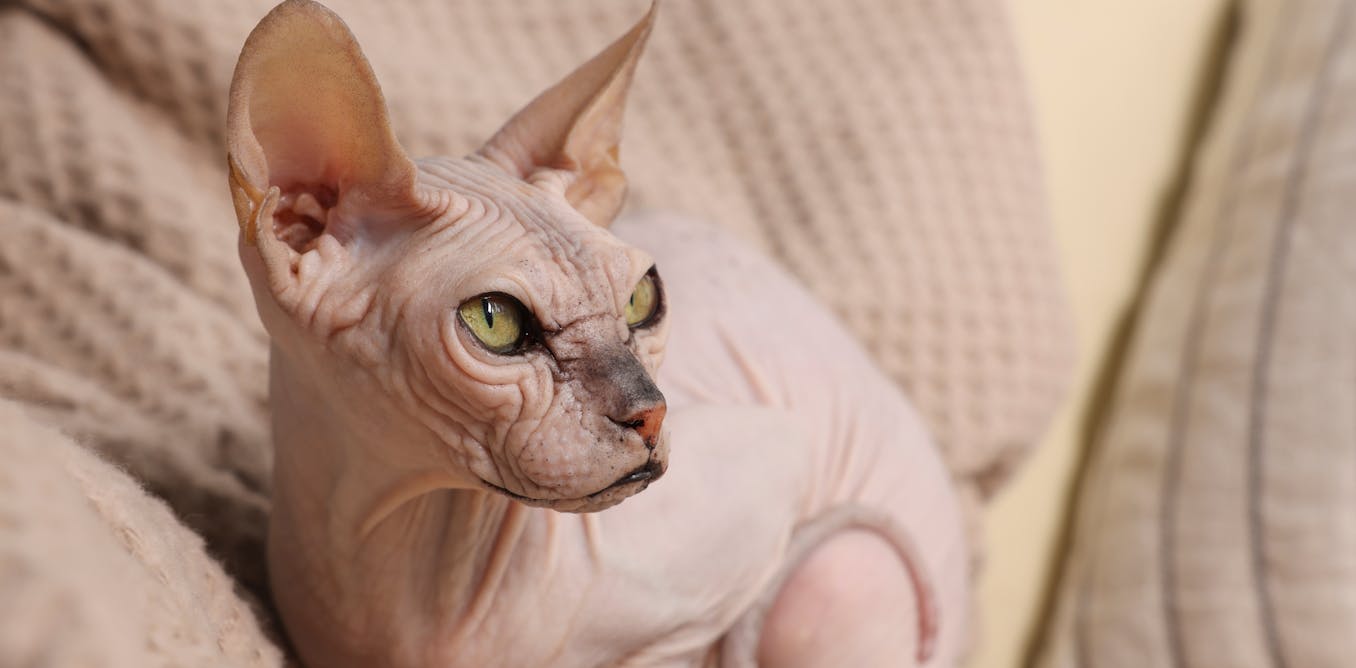[ad_1]
Pedigree cat breeding has extended had its controversies nonetheless a mannequin new pattern for cats bred to seem like American bully XL canine would possibly very successfully be perhaps most likely essentially the most worrying fads nevertheless.
So-called “bully cats” originated contained in the US and are a outcomes of mutant breeding. In distinction to pedigree breeding, which focuses on defending animals purebred, mutant breeding consists of deliberately combining genetic mutations to create cats with a selected look. On this case, they combine the gene that causes hairlessness in sphynx cats with the gene accountable for the momentary legs of munchkin cats, making bully cats a munchkin-sphynx cross.
These cats share an in depth resemblance to bully canine, a bunch of breeds characterised by a sturdy assemble, big physique and momentary coat. American XL bully canine had been banned contained in the UK in 2023. Merely presently, bully cats have made their approach to the UK, the place social media accounts selling this new mutant breed have emerged.
In response to Marjan van Hagen and Jeffrey de Gier, animal welfare and duplicate specialists at Utrecht School in The Netherlands, these mutations can have excessive successfully being penalties for the cats and prohibit their freedom of motion. Kittens have already got a restricted expertise to deal with their physique temperature and that is made relatively extra sturdy by hairlessness and makes them additional suspectible to respiratory infections.
An absence of fur may also finish in sunburn and pores and pores and pores and skin most cancers in hairless cats. Just like the sphynx, bully cats furthermore lack whiskers, which cats rely on for communication, navigating their setting and gauging spatial dimensions.
Short-term-legged cats furthermore face factors. Short-term legs prohibit their expertise to leap, can put cats at a draw back in fights and can finish in painful successfully being circumstances. Though breeders declare that bully cats are healthful and long-lived, it’s nonetheless too early to hunt out out their long-term successfully being and welfare.
Some breeders furthermore say they’re screening the cats they breed from for circumstances akin to coronary coronary coronary heart illness. This will likely help stop successfully being factors, nonetheless it could really’t overcome the whole successfully being and welfare elements with mutant breeding.
A May 2024 take a look at by veterinary epidemiologist Kendy Tzu-Yun Teng and colleagues assessed annual life expectancy in UK cats and located that the frequent cat lives almost 12 years, nonetheless sphynx cats have the shortest lifespan — merely 6.7 years. Bully cats, being each hairless and short-legged, could face twice the variety of challenges encountered by sphynx and munchkin breeds.
Contained in the wild, unrelated species that face comparable environmental challenges often develop related traits, a course of generally often called “convergent evolution”. Irrespective of coming from absolutely utterly completely different evolutionary paths, these species evolve to look and behave in related methods.
Take the sugar glider from Australia, for instance. It appears and behaves very similar to the US flying squirrel, nevertheless one is a marsupial and one is a mammal. Each animals confronted the issue of one of the best ways to change efficiently in a forest cowl, and superior the an an identical determination.

I Wayan Sumatika/Shutterstock
In an an identical methodology, many domesticated animals share frequent traits, collectively generally often called “domestication syndrome” together with elevated tameness, juvenile behaviour, floppy ears and smaller tooth. Traits that helped them regulate to life with of us. Nonetheless, the resemblance between bully cats and canine doesn’t come from this gradual, pure course of. Instead, it’s the outcomes of selective breeding primarily based completely on aesthetics.
Veterinarian and animal welfare scientist Wenche Farstad summarises this as breeding for “curiosity or cuteness” of their 2018 paper on moral breeding. Whereas individuals usually uncover traits like spherical eyes and momentary nostril measurement to be notably cute, breeding for hairlessness and shorter legs is best aligned with the idea of breeding for curiosity.
On this case, the resemblance between bully cats and canine is additional about human-driven design, the place look is prioritised. The bully cat appears to have been deliberately bred to resemble the bully canine, probably ensuing from their notion amongst youthful males as a kind of standing image.
Would possibly bully cats survive with out of us?
Mutations that hinder survival and duplicate usually flip into uncommon in nature. Nonetheless, of us bypass pure choice by deciding on which animals breed, permitting traits that could be disadvantageous contained in the wild to persist.
Examples of this may be seen all by way of varied residence species. As an illustration, on account of muscularity of their calves, Belgian Blue cattle require caesarean sections in additional than 90% of births.
One completely different farm animal, the trendy broiler hen, has been bred to develop relatively lots sooner than its wild counterparts. If allowed to stay longer than their frequent slaughter age, many wouldn’t survive. Bully cats would most likely furthermore battle to outlive contained in the wild, with out of us to handle them.
Crossbreeding functions could help improve genetic range and scale back dangerous traits in quite a few breeds. Nonetheless, for mutant breeds an identical to the bully cat – the place hairlessness and momentary legs are defining traits – this isn’t a smart determination.
Potential pet homeowners want to pay attention to the dangers related to proudly proudly proudly owning mutant and experimental breeds. Patrons protect purchasing for energy. We’re ready to discourage breeders from prioritising aesthetics over the successfully being and welfare of the animals by refusing to purchase breeds with excessive traits.
A way in path of moral breeding could guarantee future cats are additional healthful, happier and free to benefit from pure feline behaviour like climbing, leaping and lounging contained in the photograph voltaic. We must always always let cats be cats.
[ad_2]
